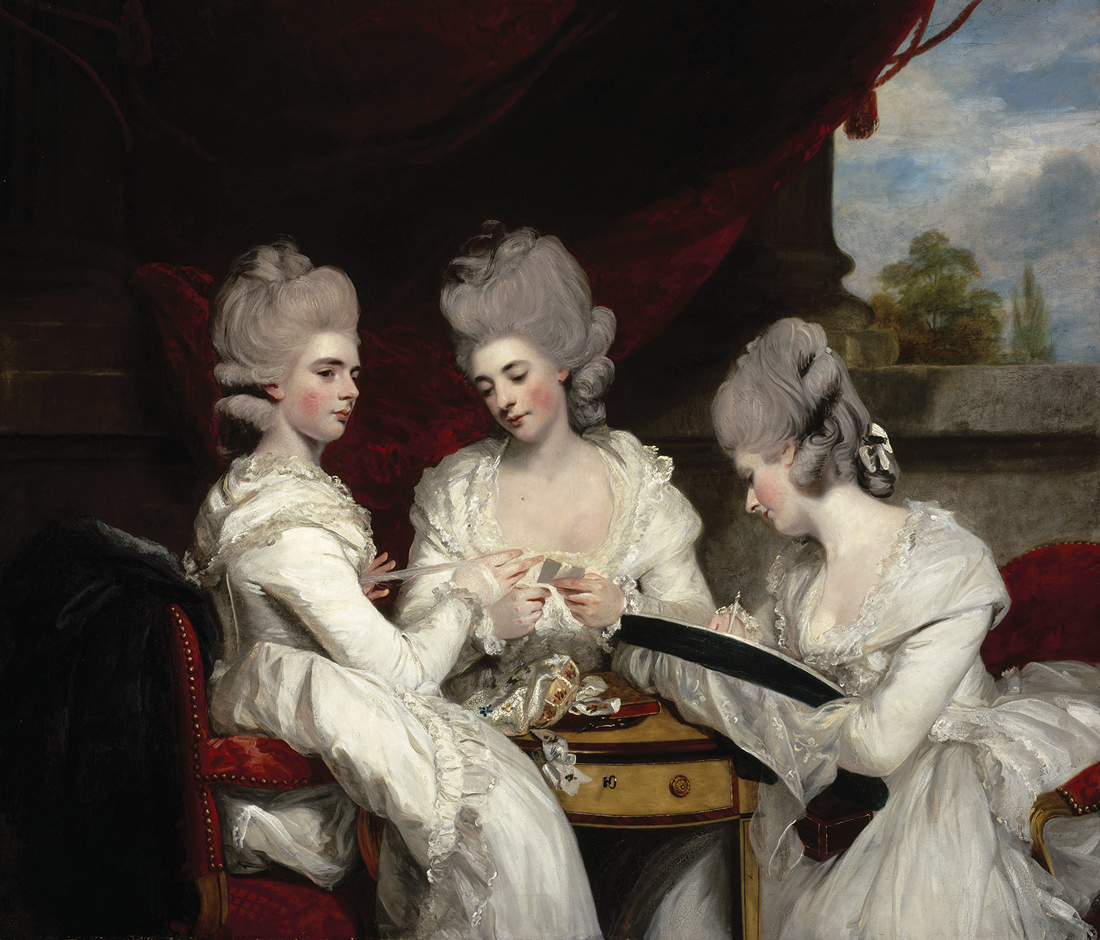A show like Botticelli to Braque: Masterpieces From the National Gallery of Scotland doesn’t have much of a theme to coalesce around other than, “Wow, they have some nice things in that museum in Scotland.” Fortunately, the things are nice enough that the exhibit currently inhabiting the Piano Pavilion at the Kimbell Art Museum is yet another must-see show in our Cultural District.
The exhibition space is arranged in a circle going around the edge, with the works arranged in a rough timeline that proceeds counterclockwise. Meanwhile, the middle of the space is a chamber formed by dividers with red cloth backing in imitation of the National Gallery of Scotland’s interior. This middle space is devoted chiefly to Scottish portraiture. Thomas Gainsborough’s rendering of John Campbell, the Duke of Argyll, is a traditional picture in the grand manner, with the subject in his peer’s robes. However, most of the space is given over to Sir Henry Raeburn, Scotland’s most distinguished portraitist and a leading light in the Scottish Enlightenment, a great flowering of arts, sciences, and letters in the 18th century. (Raeburn crossed paths with David Hume, Adam Smith, and Robert Burns.) His 1812 portrait of Alexander Ranaldson MacDonell was painted after the British crown lifted a ban on wearing Scottish tartans. The subject, a wealthy landowner and a colonel in the British Army during the Napoleonic wars, is seen resplendent in Highland gear with a kilt and a glengarry, the bonnet named after MacDonell’s clan that was adopted by MacDonell’s infantry unit and is still worn by the Scottish military to this day.
Outside the chamber are even more sumptuous portraits. Sir Joshua Reynolds’ lustrous 1780 rendering of The Ladies Waldegrave shows these three teenage daughters of an earl and diplomat working on a piece of needlework and demonstrating how to maintain an elegant posture while wearing a pannier and sitting down. Even more opulent is John Singer Sargent’s 1892 portrait of Lady Agnew of Lochnaw, the wife of a baronet, who’s painted lounging in a chair in a white gown and a mauve sash against a blue silk background. This beautiful woman stares directly out at us with an expression indicating a sly, knowing sense of humor. Of additional interest is F.C.B. Cadell’s 1921 “Portrait of a Lady in Black,” a piece near the end of the exhibition’s timeline that shows the influence of Impressionists and Modernists in Scottish art, a fact not widely known.
There’s much else to see besides society portraits. Diego Velázquez’ “An Old Woman Cooking Eggs” is a masterpiece of genre painting, with possibly an encoded message about the old passing on their wisdom to the young. The Spanish master’s brush expertly renders the texture of the hot oil and the solidifying eggs, the copper pot, and especially the red onion lying on the table next to the woman. John Constable’s “The Vale of Dedham” is a spectacular Suffolk landscape with billowing, venerable trees and light glistening on the banks of the River Stour in the distance.
For sheer force, nothing matches Frederic Church’s “Niagara Falls, from the American Side,” which captures the waterfall’s size and power. (To enhance the effect, Church omitted the various walkways that had given tourists better access to the falls, instead painting two tiny observers on a rickety platform.) What an impression this massive 1867 canvas must have made at a time when far fewer people could travel to see the natural wonder in person.
Besides the masterworks, the show has obscurities that will satisfy any museumgoer who shares my taste for the weird. Sir Joseph Noel Paton’s “The Reconciliation of Oberon and Titania” is one of many paintings of fairies that the Victorians loved, though few artists in the genre had Paton’s deep knowledge of folklore to go with it. His renderings of fairies of different sizes and aspects (some of whom are torturing woodland animals) and the fairy king and queen are so crisp that you might mistake the painting for a poster. The same goes for Adam Elsheimer’s “The Stoning of St. Stephen,” which gets its jewel-like colors from the fact that it’s painted on a copper plate, like most of the artist’s works. This short-lived 16th-century German painter who worked in Italy isn’t well known, but his early death caused no less than Peter Paul Rubens to mourn it as a loss to the art world.
The most fascinating backstory belongs to Richard Dadd’s portrait of Sir Alexander Morison, executed when Dadd was a patient at the infamous Bethlehem Royal Hospital for the mad, where Morison worked as an alienist. Dadd had been a rising star before he started behaving erratically in his 20s, eventually murdering his father during what we would recognize today as a psychotic break. (He claimed to be acting on orders from the Egyptian god Osiris and that he needed to assassinate the emperor of Austria. His room was discovered filled with drawings of his friends and family with their throats slashed.) Insane asylums in the 19th century tended to be nasty places, but Dadd was able to charm his handlers into letting him keep making art during his life imprisonment. Despite his history of violence, he eventually had his own studio and even his own palette knives. The portrait is done up in manic detail, yet all the proportions are slightly off — the fishwives in the background look related to Humpty Dumpty. This very early example of art therapy is one of the odder but distinct attractions of Botticelli to Braque.
[box_info]Botticelli to Braque: Masterpieces from the National Gallery of Scotland
Thru Sep 20. Kimbell Art Museum, 3333 Camp Bowie Blvd, FW. Free-$18.
817-332-8451.[/box_info]













Having read this I thought it was extremely enlightening. I
appreciate you finding the time and effort to put this
information together. I once again find myself personally spending a significant amount
of time both reading and posting comments.
But so what, it was still worthwhile!